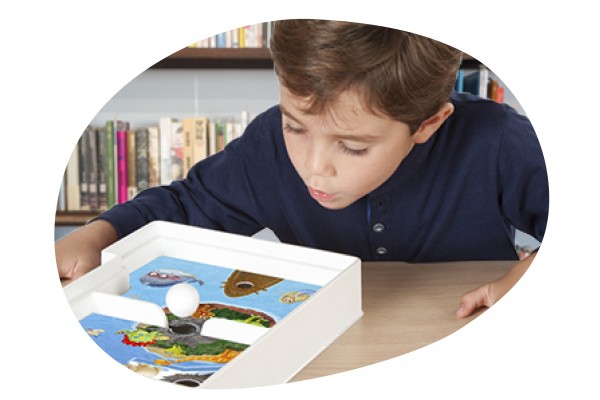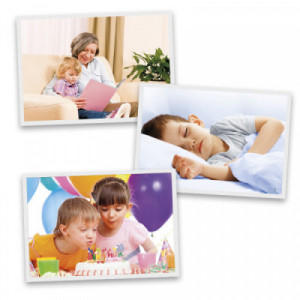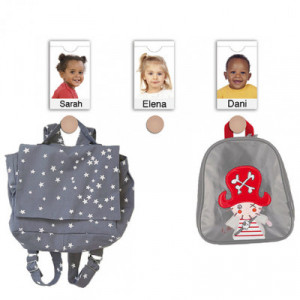Speech therapy material: games and reinforcement materials
Speech therapy, also called phonoaudiology, is considered a discipline and profession in development. It studies how to anticipate, evaluate and treat disorders in human communication. Speech therapy material is an essential factor for treating language problems in children. Language is a cause for concern when, instead of helping to communicate, it impedes communication.
At Akros, we know how important it is to have the speech therapy material needed for speech therapy, since it is necessary to work each problem with a specific didactic material. In this way, we will be able to help children strengthen concepts, pay attention and improve their speech and language impairments. Both spoken and written language, as well as comprehension and expression.
Speech therapy helps you to improve aspects such as communication, language, speech, voice or swallowing problems.
You must prevent and detect these aspects, as well as identify and evaluate them in order to give you a correct diagnosis and proceed to treat these problems in the most appropriate way.

Child speech therapy materials for each language disorder
Speech therapy treats different pathologies so the materials for speech therapists are focused on treating each of these pathological problems
Speech therapy material for simple language delay
Language development is much slower than usual. The child finds it difficult to construct phrases and has problems with pronunciation in certain sounds.
For this language problem, speech and language games are used to form words that are represented in images or pictorial storyboards. This last resource is a very effective playful material to learn to form sentences through pictograms of story characters.
Speech language resources for TEL or specific language disorder
Children with this problem have impaired language development. They are more advanced in some areas than in others and have a very heterogeneous vocabulary, pronunciation problems, etc.
As with the above pathology, it is important for the child to work on word and phrase training with educational materials that focus on it. The self-dictation of nouns and verbs, as well as picto - dice for telling stories are essential speech therapy materials for this problem.
In addition, we always have at our disposal the children of the Association of Speech Therapists of Spain, capable of looking after the interests of all the speech therapists in the country, who actively participate in the creation of our toys.
Educational Speech Therapy Materials for Reading and Writing Problems
These are the problems arising from written expression. Patients experience difficulties in segmentation of the word or phrase. They often do not understand what they read. In addition, they are unable to tell a story in written form.
Children's speech therapy materials are used for this problem. Among them are picto games, letter games and oral games such as self-dictated word and verb games. In addition, all those resources are used in which the drawing is associated with the letter or the drawing with the word (such as abc or forming words).
Speech therapy material for Aphasia
This language disorder is characterized by the fact that children who have it have communication difficulties through speech, writing, and mimicry. This is because they present injuries in the brain (strokes, strokes, strokes...)
The tray and the punch is a teaching material with many possibilities. In addition, all the puzzles that are useful for children with fine motor problems and problems with spatial and temporal organization.
The Logo Bit materials help educators to get the child to communicate by explaining what he or she sees and thus reinforcing his or her language competence.
Sensory games are indicated for people with sensory aphasia, touch-photo or smell will help the child develop his or her sensory capacity.
In order to work on this pathology it is also very useful to use the materials of speech therapy of photographs (photographs of food, photos of objects in the house, images of adjectives...). Using them, the speech therapist will be able to perform exercises in which the child can form simple sentences by joining words.
Speech language games for the hearing impaired
It consists of the inability to hear (total or partial) sounds in one or both ears. To get the youngest children to speak well, they must first recognize the language.
The Blow Job is the material that will most help you develop your hearing and speaking skills. Picto games are also essential as they encourage initial communication and facilitate the child's relationships.
Speech therapy materials for Dyslalia, Dysarthria and Dysglosia
Dyslalia is a vocal joint problem. They have problems pronouncing certain sounds. We work with games related to oral expression. Dysarthria occurs in people with cerebral palsy or brain damage. They have trouble articulating language because their organs are not functioning well. Diglossia is also a joint problem resulting from malformations of the respiratory organs.
For these three pathologies we work with the games of the Logo Bit Method. The Bit Logo of articulatory ability uses articulated phono training cards, an essential material for working on pronunciation problems. A very good speech therapy material is also the Blow Game, because it allows you to train the intensity, power and directionality of the blow, thus developing a correct breathing pattern.
Speech therapy games to work on Dysphonia
There are two types of dysphonia: organic and functional. It is produced by acoustic parameters such as tone, timbre and intensity. To work with this problem, the speech therapy material that is usually used is the Blow Game. It's perfect for enhancing your ability as well as for listening games such as dictation.
Speech therapy equipment to treat Autism
People with autism have a variety of language problems. Autistic children with language development problems. They tend to have a low level of expression, understanding and social interaction through language.
The speech therapy materials that can be used in autistic disorders are multiple. Picto dice and dice to create stories will help the child begin to express and understand.
The photographs of animals, actions, adjectives and nouns form a very broad resource for multiple exercises. The child will try to associate images with the photo and form understandable phrases by putting several images together. In addition, games related to the body and expressions and the Logo-bits of orofacial praxis are very useful. They improve the child's interaction with society.
What are the best materials for speech therapy?
Speech therapy comes from Greek and means education of the word, so the speech therapist must help this education through specific techniques and by helping himself with specific material.
We must not forget that speech therapy is not only dedicated to speech and language disorders, but also to problems such as dyslexia or other problems such as the assimilation of the most basic concepts of mathematics, or also problems with writing, for example, writing with defects that are not well understood or have a neurological or intellectual basis.
Language should make it easier for us to communicate with each other and not prevent it, and speech therapy should facilitate that communication.
Dealing with language problems is essential for children to integrate and adapt to the environment and the community around them, otherwise, if a child has difficulties both in expressing themselves and in understanding what they are being told, they may develop more slowly.
For this reason, parents and family members living with the affected child should be actively involved in all treatment.
The speech therapy material should be divided into three main parts:
- Detection and evaluation of symptoms and types of need.
- Intervention with treatments adapted to each specific case.
- Guides and manuals with all the necessary documentation to carry out the treatments effectively.
Games such as those that stimulate and work the blow, exercise their power and intensity in addition to directionality, for example by carrying a ball through a small circuit, by blowing. This helps them to develop their breathing pattern in the right way.
Also, games with phonemes will help both pre-reading and pre-writing, helping to improve spelling, word formation, etc., all through an association between image and words.
Speech therapists will be the professionals in charge of identifying, diagnosing and treating the problem, but it is essential that the entire environment works together to achieve the objectives.
Speech therapy sessions are really effective, and after each of them you will notice the change, but it is a constant change that requires effort and patience to move forward more quickly and effectively.
The speech therapist will be able to teach both the child and the parents so that the exercise can also be transferred to the home and can be continued easily.
Teachers must also take into account the needs of the child in each case, his or her difficulties and how to help the child.
It is in the hands of all those around the affected child to be able to move more or less quickly towards an earlier recovery.
How to use speech therapy material to get good results
In short, and after observing the multitude of speech therapy materials that you can find in Akros, as well as the printable speech therapy materials available on the Internet, it is necessary to take into account the importance of speech therapy since, without its function, these speech therapy resources and materials are not effective.
It is essential to have a person to study each case. And then, really choose the working method that suits each diagnosis.
Speech therapists should encourage, facilitate and empower children's communication. Through educational resources, with a lot of patience and daily work. The playful environment will help the child feel comfortable and willing to move forward in his or her progress.
The speech pathologist will provide all necessary assistance, from prevention and detection to treatment. But in addition, he will advise all patients with this type of problem as well as all those around him as caregivers, teachers, parents, siblings, etc..













































